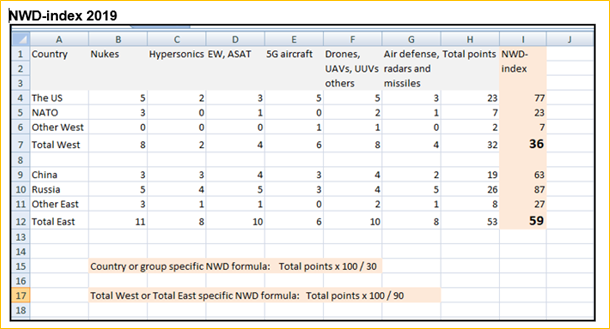Revolution in Military Affairs (RMA) and state-of-the-art new weapons
The Revolution in Military Affairs (RMA) is a military-theoretical concept about the future of warfare, connected to technological and organizational transformation in military procedures.
Furthermore, those changes compel an accelerated adaptation of novel doctrines and strategies, which lead to an irrecoverable change in the conduct of warfare.
Originally, it may have been a Russian Marshal Ogarkov, who was theorizing such ideas in 1970s and 1980s. Soon it was introduced by American researchers and security analysts and later the concept has spread in military circles nearly worldwide. However, it is not adopted by all militaries due to its significant infrastructure and investment costs.
In recent years, particular attention to RMA has been paid by each great power –the US, China, Russia – as well as UK, France, Canada and India to some extent.
The United States’ victory in the 1991 Gulf War renewed interest in RMA theory. American dominance through superior military technology emphasized how the US technological advances reduced the relative power of the Iraqi military to insignificance. After the Kosovo War, in which the United States utilized particularly well the air forces and did not lose any soldier, some analysts stated that war had become too sterile, creating ”a virtual war”. On the other hand, changing battle field success in Iraq and Afghanistan has made military experts to question benefits of RMA in the face of asymmetrical warfare.
Nowadays the concept RMA is fragmented at least in three versions:
a) focus on changes in the role of nation-state and the role of organized military in using force (e.g. private contractors and mercenaries vs. national conscription),
b) focus on the evolution of weapons technology, IT, military organizations and doctrines among advanced major powers, in other words “System of Systems” perspective on RMA,
c) focus on “true” revolution on military affairs like Internet, information technology, social media, political meddling.
On this website the focus is on point b) “System of Systems” perspective on RMA.
The selection of the most prominent new, state-of-the-art, weapons is based on the estimated effectiveness of a weapon / weapon system to the requirements of the modern/future warfare, all this in the context of great power triangle game.
The justifiable content and process is presented in following sections but here is the summary list:
- updated nuclear weapons, incl. delivery methods (nuclear triad)
- hypersonic weapons (missiles, gliders etc.)
- 5G fighter jets and bombers
- drones, other unmanned aerial vehicles (UAV) and unmanned underwater vehicles (UUV)
- new air defense systems
- electronic warfare (EW) and anti-satellite technology (ASAT)
- lasers, railguns and other futuristic weapons
Summary of new weapons
Here is the summary of this analysis 2019, NWD-index (new weapons deployment index).

The numbers in the above table, regarding NWD-index, indicate clearly both the present situation and the direction where things are going:
- The East is getting an upper hand also in new weapons deployment.



